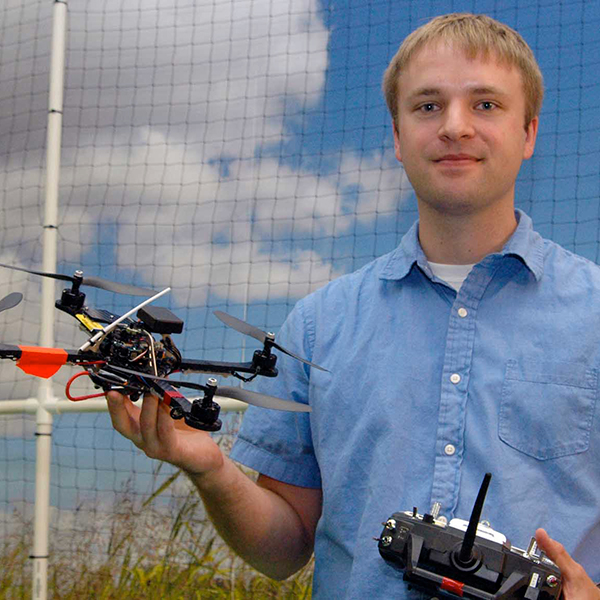Calendar Icon
Dec 19, 2017
Person Bust Icon
By Karl Vogel
![]() RSS
Submit a Story
RSS
Submit a Story

RELATED LINKS
Nebraska Engineering faculty Richard Wood and Daniel Linzell will be using the some of the latest technology available when they study the Cather and Pound residence hall buildings as they fall, and this will include the use of drones.
Carrick Detweiler, associate professor of computer science and engineering and one of the faculty in the Nebraska Intelligent MoBile Unmanned Systems (NIMBUS) Lab, said the ways that drones can be used in engineering research have increased greatly in just the past few years but noted that there can be one important limitation –battery life.“
Most of them fly 15 to 30 minutes on a set of batteries, and if you’re putting heavy sensors on them it might be even shorter,” Detweiler said. “Definitely, the battery technology isn’t there yet.
“We are moving towards and are pushing the miniaturization of sensors and other systems, because if you can get them smaller and lighter weight you can, obviously, fly longer with them.”
For this project, sensors are being used to capture data about the vibration of the buildings before and as they fall. However, Detweiler said, there are myriad other types of data that drones could be used to gather if the researchers were willing to risk the drones being destroyed in the demolition.
“It would be interesting if you had a fleet of 30 drones with different atmospheric sensors, and you could put a drone every 10 feet until you get right next to the building,” Detweiler said. “They can be monitoring noise levels, turbulence in the air, dust, things like that. I could see you getting really fine levels of data that could be useful, especially if you’re talking about demolitions in difficult locations.”
In general, Detweiler said, using drones has allowed for researchers to go places and gather data they wouldn’t otherwise be able to reach. Plus, they also offer one other advantage.
“The good thing is there isn’t a person on them,” Detweiler said. “It’s OK if they crash as long as you can get the data off them.”
Submit a Story